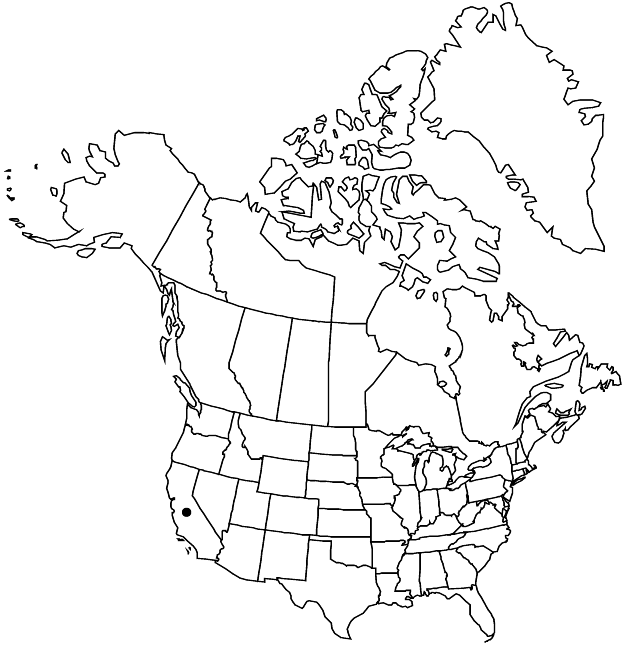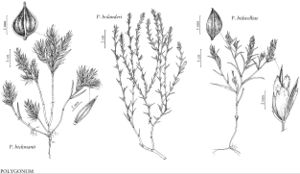Polygonum hickmanii
Novon 5: 336. 1995.
Herbs, compact, often cushion-like. Stems erect, color unknown, simple to profusely branched from near base, not wiry, 2–5 cm, glabrous. Leaves persistence and crowded at brance tips, not articulated to ocreae; ocrea 4–6 mm, glabrous, proximal part cylindric, distal part silvery, disintegrating nearly to base into straight fibers; petiole absent; blade 3-veined, without pleats, linear, 5–35 × 1–1.5 mm, margins revolute, smooth, apex acuminate. Inflorescences axillary; cymes insertion unknown, 1-flowered. Pedicels absent. Flowers closed; perianth 2–3 mm; tube 6–18 % of perianth length, tepals imbrication unknown, white with whitish or pink margins, petaloid, oblong, apex acute, mucronate; midveins unbranched; stamens 8; anthers orange-pink. Achenes enclosed in perianth, olive brown, ovate, 2–2.3 mm, faces subequal, shiny, smooth.
Phenology: Flowering May–Oct.
Habitat: Open, seasonally dry grasslands
Elevation: 200-300 m
Distribution

Calif.
Discussion
Of conservation concern.
The above description is based on the original one by Hinds and Morgan. Polygonum hickmanii is known only from the northern end of Scotts Valley in Santa Cruz County.
Selected References
None.
